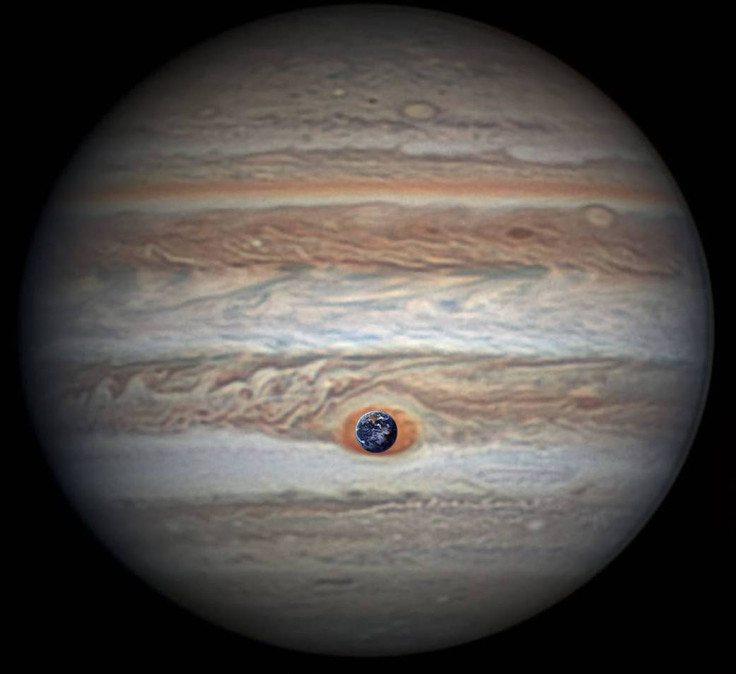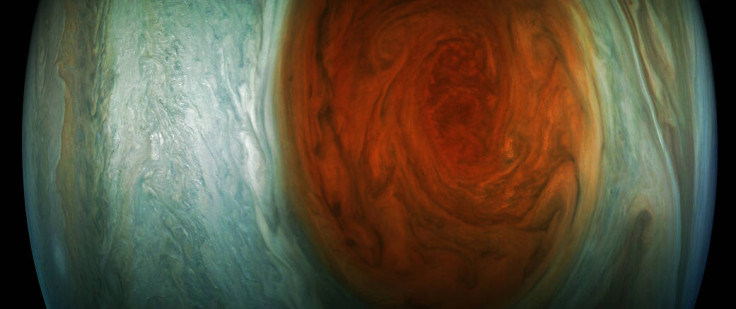Nasa's Juno probe captures stunning 'up close and personal' photos of Jupiter's Great Red Spot
The spacecraft successfully completed a flyby, coming within 9,000km of Jupiter's iconic hurricane.

One of the most iconic features of Jupiter – its mysterious hurricane called the Great Red Spot – has fascinated astronomers and scientists for centuries.
However, we now have never-before-seen images of Jupiter's swirling hurricane. The photos come courtesy of Nasa's Juno spacecraft, which successfully completed its historic Jupiter flyby, coming within 9,000km of the Great Red Spot.
Although the massive hurricane has been swirling for centuries, not much is known about it.
Jupiter's Great Red Spot is a 16,350km-wide storm, nearly 1.3 times as wide as the Earth, with astronomers and scientists monitoring it since 1830.
According to Nasa, the massive fuming storm is likely to have been in existence for "more than 350 years." However, more recently, Jupiter's swirling red eye "has appeared to be shrinking."
Nasa said in a statement that all the scientific instruments aboard the spacecraft, as well as the JunoCam, were operational during the flyby in order to collect data.
"For hundreds of years scientists have been observing, wondering and theorising about Jupiter's Great Red Spot," Scott Bolton, Juno principal investigator from the Southwest Research Institute in San Antonio, said in a statement.
"Now we have the best pictures ever of this iconic storm. It will take us some time to analyse all the data from not only JunoCam, but Juno's eight science instruments, to shed some new light on the past, present and future of the Great Red Spot."
According to Nasa, Juno reached perijove (the point at which an orbit comes closest to Jupiter's centre) on 10 July, when the spacecraft was 3,500km "above the planet's cloud tops."
Just 11 and a half minutes later, Juno had travelled nearly 40km to pass "directly above the coiling, crimson cloud tops of the Great Red Spot."
The raw images from JunoCam are now being processed by the Juno team, as well as citizen scientists. "Now we are finally going to see what this storm looks like up close and personal," Bolton said.
Spot spotted! #JunoCam raw images from my #Jupiter #GreatRedSpot flyby are available now. Download, process + share https://t.co/zx6fcc7Fzu pic.twitter.com/NJafDJVVW6
— NASA's Juno Mission (@NASAJuno) July 12, 2017
"I have been following the Juno mission since it launched," said Jason Major, a JunoCam citizen scientist and a graphic designer from Warwick, Rhode Island. "It is always exciting to see these new raw images of Jupiter as they arrive.
"But it is even more thrilling to take the raw images and turn them into something that people can appreciate. That is what I live for."
Meanwhile, Nasa's Director of Planetary Science, Jim Green, said: "These highly-anticipated images of Jupiter's Great Red Spot are the 'perfect storm' of art and science.
"With data from Voyager, Galileo, New Horizons, Hubble and now Juno, we have a better understanding of the composition and evolution of this iconic feature. We are pleased to share the beauty and excitement of space science with everyone."
Here are some of Juno's historic images of the Great Red Spot:



© Copyright IBTimes 2025. All rights reserved.






















